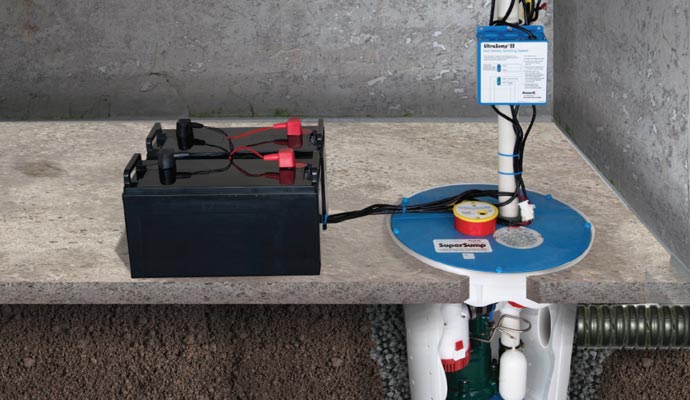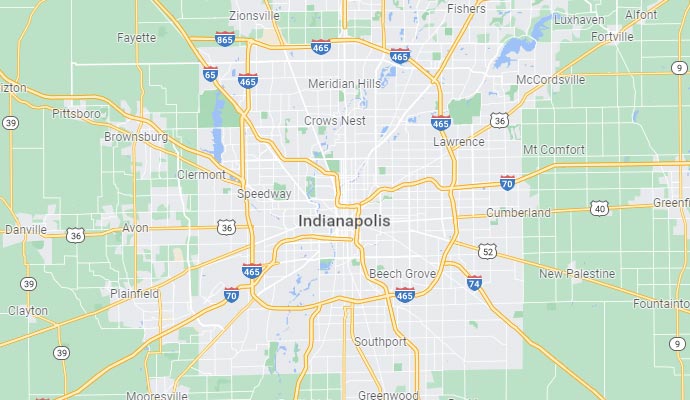Battery Backup Sump Pumps
You may not know it, but your sump pump could be the difference between a dry and wet Indianapolis basement or Indianapolis crawl space when heavy rains hit.
As a quick reminder, household sump pumps:
- Are installed in the lowest part of a Indianapolis basement or crawlspace;
- Pump groundwater away from your home’s foundation so the Indianapolis basement or Indianapolis crawlspace stays dry;
- Are typically fed by a basement waterproofing system, french drains, or natural migration of groundwater through the soil.
Adding a battery backup sump pump to your home means better protection against flooding and peace of mind during times of heavy rains and power outages.
Is a backup sump pump right for your home?
If a heavy thunderstorm knocks out your electricity, your primary sump pump is unable to operate. This is where a battery backup comes in. A basic battery backup system consists of a battery and a secondary, backup pump. Many feature alarms and chargers to ensure the battery stays at a full charge.
There are many factors to take into consideration when deciding on your battery backup system. Here are a few of the biggest factors.
- Monitor your sump pump to see if you detect a big difference in activity during heavy rainfall. Does it have trouble keeping up?
- Are power outages common in your area? Even if they aren’t, a battery backup can still ensure backup in the rare instance the primary pump does lose power. Think of it as “insurance” for your primary system. You might not think you need it until the lights go out and the rain starts seeping in!
- Is your primary pump constantly running? Depending on the water table in an area, some homes have pumps that seem to run all the time. If your pump is one of these, you may want to think about a battery system for peace of mind in case your sump pump malfunctions.
- Some homeowner insurance policies have sump pump riders available as add-ons, which offer additional coverage in case of a flood or leak. However, these riders often require a battery backup sump pump be in place.
What should your backup sump pump system include?
There are a number of options on the market–so where do you begin? Here are some quick tips on understanding the basics of the system, comparing features and selecting the right one.
- If your Indianapolis basement has a living space, you may prefer a submersible pump as opposed to a pedestal pump. Submersible pumps allow you to put a lid on the pit which reduces noise and keeps out any debris. The lid will also help keep moisture contained and prevent it from being released into the home.
- Pumps are built out of either plastic or cast iron. Plastic pumps get the job done and are more affordable, but cast iron is often preferred for its much greater reliability and durability. Cast iron also helps dissipate heat to the surrounding water, which lengthens the life of the pump.
- Mechanical switches, instead of pressure switches, are preferred. A solid float can ensure the switch can’t become waterlogged, fail to switch off and it’ll burn out.
- Combination packages with two or three pumps are also available.
- Pumping capacity and output of the secondary pump can play an important role. If you go with a smaller secondary pump with less pumping capacity, and the power does go out, the backup system renders essentially useless. Most primary pumps have an output of 35-60 gallons per minute. Make sure your secondary pump can pump an equivalent amount of water!
- If seeking a professional installation, consider the warranty on sump pumps offered by different waterproofing contractors. In the case of an issue or malfunction, having a reputable and responsive service department is just as important as the length of the warranty.
If you are interested in backing up your primary sump pump system with a battery backup sump pump, contact the waterproofing experts at Americrawl today 463-218-6767 to discuss the best options for your home.
Details
Published: 03 June 2019

















